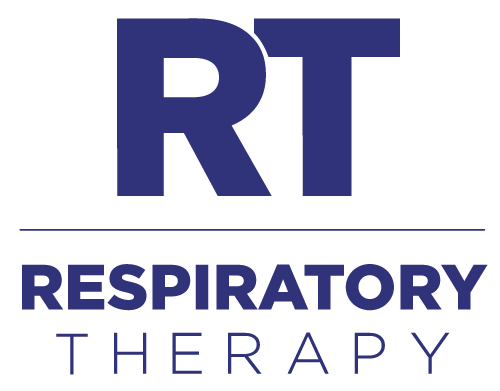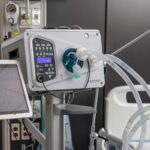Adherence to airway clearance therapy in the home is crucial for managing chronic lung conditions, but challenges like time constraints and lack of perceived benefit can hinder patient compliance. Experts offer strategies and new technologies to help improve patients’ adherence.
By Alyx Arnett
Prescribing airway clearance therapies (ACT) to discharged lung disease patients is only the first step in their wellness journey. For adult and pediatric patients with chronic lung conditions like cystic fibrosis (CF), chronic obstructive pulmonary disease (COPD), or bronchiectasis, successful outcomes rely on adherence to these therapies at home.
However, adherence remains a challenge for many patients. A year-long study reported persistently low levels of ACT adherence among 45% of adult CF patients.¹ Another study found that 59% of bronchiectasis patients were non-adherent to ACT, while 49.4% of COPD patients were nonadherent in a separate study.2.3
Consequences of poor adherence can be severe, including accelerated lung function decline, recurrent exacerbations, and diminished quality of life.4
“It’s really important — not only in the hospital but then out of the hospital — to make sure that people who are discharged are adequately mobilizing the increased secretions from the infection that brought them into the hospital,” said Christian Merlo, MD, a pulmonologist at Johns Hopkins Medicine and associate professor of medicine at the Johns Hopkins University School of Medicine.
Time-consuming
ACT regimens may include positive expiratory pressure (PEP), oscillatory PEP, high-frequency chest wall oscillation (HFCWO), oscillatory lung expansion (OLE), and intrapulmonary percussive ventilator (IPV) therapy, as well as chest physiotherapy and postural and autogenic drainage. Some therapies can be time-consuming and complex, leading to consistently low adherence rates.5
“For teenagers and adults, one of the biggest challenges is finding the time to fit the sometimes very time-consuming airway clearance therapies or modalities into their daily living,” said Dawn Selhorst, BS, RRT-NPS, RPF, of Nemours Children’s Hospital.
Selhorst may suggest patients complete less time-intensive therapies in the morning when their schedules are often busy. These include PEP and OPEP, which can be done on the way to school or work, and OLE, which can be completed relatively quickly, according to Selhorst.
Valerie Keever, RRT, pulmonary physiology diagnostic coordinator at National Jewish Health, said that recommending patients incorporate therapies into everyday activities, like watching TV, can help make the process feel less time-consuming. “Once they realize that taking just 10, 15, up to 30 minutes of time keeps them out of the hospital, then they’re far more likely to start adhering to a daily routine,” Keever said.
With various ACT options available, it also can be helpful to remind patients that if one therapy doesn’t fit their routine, there are other alternatives, according to Keever.
Lack of Perceived Benefit
Another reason patients may not adhere to ACT is a lack of perceived benefit. “They don’t always get that immediate response. They’re not seeing changes in their lung function, which they don’t understand necessarily isn’t a bad thing because we’re trying to maintain their lung health,” said Keever.
It’s important to help patients recognize that if they haven’t had sick visits or been hospitalized, it’s an indicator the therapy is working, she said.
Merlo finds that visual cues can be helpful. For instance, when a patient is hospitalized with reduced lung function, pulmonary function testing often shows improvement after ACT combined with other treatments, including antibiotics. “We can show patients a graph and say, ‘Hey, you did this, and it’s not only because of the antibiotics we gave you, but it’s also because of the airway clearance,” said Merlo.
Imaging, such as chest X-rays or CT scans, can also motivate patients by showing the presence of mucus in their airways. “Pictures are worth 1,000 words,” Merlo said.
Patients may also stop using therapy if they’re feeling well, noted Tom Russell, RRT, director of advanced respiratory solutions at Sentec, maker of the Impulsator for home IPV therapy. “When someone feels OK, they feel it’s not necessary, when, in fact, those secretions are still being generated and increasing the odds that, if the secretions aren’t removed, we’re now going to increase the odds of a setback, the odds of a respiratory tract infection, and then we end up hospitalized because we didn’t think it was important as it needed to be,” he said.
It can be helpful to communicate the importance of continuing therapy, even when the patient feels well. “[It’s about] trying to harp home on the fact that these therapies, in combination with what we’re used to going to the doctor for—getting medicine, a pill or shot—can be very, very helpful,” Merlo said.
Lack of Early Education for Older Pediatric Patients
Children typically are more adherent to ACT than teenagers and adults. A study of CF patients found that noncompliance was more common among older patients, with 69.2% of those aged 15 and older showing noncompliance, compared to 23.8% of those under age 15.6
Selhorst attributed this, in part, to a lack of early education directed at the children themselves. “We tend to teach the families and not the children,” she said. “As the children become adolescents and they’re getting to that point where they’re pushing back, a lot of times it’s because we haven’t taken the time to educate them as to why we’re asking them to do these therapies.”
Educate older pediatric patients about the reasons they’re being prescribed ACT and its importance for long-term health, she said. She also recommends discussing patients’ preferences and tailoring therapies to what works best—and what they’ll do.
Exercise may be one of those options, she says, noting that it’s becoming a more integral part of airway clearance routines. “It used to be considered more of an adjunct therapy, but now, incorporating exercise allows them to feel like they’re actively improving their health without the burden of traditional therapies,” she said.
Difficulty Initiating Therapy
For some patients, difficulty adhering to therapy may stem from challenges in getting started. “Airway clearance device set up and use can vary in complexity. If the patient is unsure about their therapy set up, they may hesitate to start their therapy,” said Martha Camacho Urribarri, RN, BSN, manager of medical affairs at Baxter, maker of The Vest System 105 (HFCWO), Volara (OLE), and Synclara Cough System for cough assist.
Additionally, discomfort during therapy can impact patient adherence. Factors such as the wear and feel of patient-interface components, equipment noise and vibration, size and weight of the device, limited mobility during therapy, and lack of customization to accommodate therapy tolerance can contribute to this issue, Camacho Urribarri said.
An option designed to address some of these challenges, available this fall, is a new HFCWO system, The Vest APX by Baxter. This device offers improvements in comfort, ease of use, and portability and is 19% smaller and 30% lighter than the previous version, according to Camacho Urribarri.
To address potential issues early on, Keever’s team follows up with patients via phone calls within the first week of initiating therapy. “Sometimes they’re just wondering, ‘Am I doing it right? Am I not doing it right?’ Maybe something’s not feeling right about the way the vest is fitting, and we can address those issues with them,” she said.
Getting patients started on the right foot can improve longer-term adherence, Keever said.
Challenges with Monitoring Adherence
Monitoring adherence to ACT can be difficult when patients are at home. “You can’t have a camera on them” to ensure they’re completing their therapies, said Merlo. A lack of regular follow-up and monitoring may result in missed signs of nonadherence.
Telemedicine offers a solution for addressing this barrier by allowing clinicians to monitor lung function remotely, which can indicate whether patients are adhering to therapy or experiencing challenges. Merlo’s team utilizes telemedicine through at-home spirometry, with respiratory therapists coaching patients through measuring lung function. “If lung function is stable and respiratory symptoms are stable, you know that is a good measure of whatever a person is doing is right for them,” he explained.
In addition, new platforms are emerging to enhance this remote support. ABM Respiratory Care’s Arc Connect platform, launching soon, will enable patients and caregivers to manage respiratory care at home while staying connected to their healthcare team. The platform integrates with telemonitoring systems and sends therapy data to other platforms, providing caregivers and healthcare providers with access to therapy data.
“This integration enhances remote patient support by allowing more informed decision-making and timely interventions,” said Leah Noaeill, MBA, vice president of marketing and clinical affairs at ABM Respiratory Care, manufacturer of the BiWaze platform, which includes BiWaze Clear and BiWaze Cough.
Additionally, ABM Respiratory Care is developing over-the-air software updates for its BiWaze platform, which will allow patients to access the latest features and improvements without needing physical updates to their devices. The company is also working on new enhancements based on feedback from patients and clinicians, aimed at further improving adherence and overall patient outcomes.
Sentec’s Russell added that the company is also focused on improving patient outcomes by updating and modernizing the Impulsator, which has been in use for over 30 years, as part of its product development roadmap.
RT
Alyx Arnett is associate editor for RT. For more information, contact [email protected].
Image credit: ICU Medical.
airway clearance therapy home
References
- Sherman AC, Simonton-Atchley S, Campbell D, et al. Persistent adherence to airway clearance therapy in adults with cystic fibrosis. Respir Care. 2019;64(7):778-85.
- McCullough AR, Tunney MM, Quittner AL, et al. Treatment adherence and health outcomes in patients with bronchiectasis. BMC Pulm Med. 2014 Jul 1;14:107.
- Turner J, Wright E, Mendella L, Anthonisen N. Predictors of patient adherence to long-term home nebulizer therapy for COPD. The IPPB Study Group. Intermittent Positive Pressure Breathing. Chest. 1995;108(2):394-400.
- Thornton CS, Somayaji R, Lim RK. Assessment of factors and interventions towards therapeutic adherence among persons with non-cystic fibrosis bronchiectasis. ERJ Open Res. 2022 Nov 7;8(4):00340-2022.
- Marciel KK, Saiman L, Quittell LM, et al. Cell phone intervention to improve adherence: cystic fibrosis care team, patient, and parent perspectives. Pediatr Pulmonol. 2010;45(2):157-64.
- Arias Llorente RP, Bousoño García C, Díaz Martín JJ. Treatment compliance in children and adults with cystic fibrosis. J Cyst Fibros. 2008;7(5):359-67.









